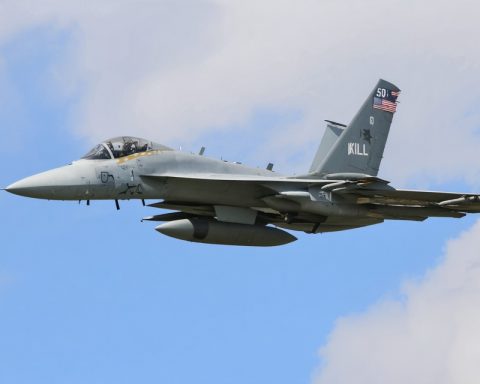The discourse surrounding military air superiority has taken an intriguing turn, particularly spotlighting two iconic aircraft: the American F-35 Lightning II and the Russian Su-35 Flanker-E. These machines, each representing the pinnacle of their respective countries’ military aviation capabilities, embody distinct design philosophies and technological advancements.
The F-35 Lightning II, a fifth-generation multirole fighter, is engineered for stealth operations, advanced electronic warfare, and networked combat scenarios. With its low radar cross-section, the F-35 boasts significant advantages in air superiority and ground attack missions. The advanced sensor fusion technology enables pilots to maintain exceptional situational awareness, which is crucial for engaging enemy forces effectively. The F-35’s integration of cutting-edge technologies is designed to ensure it remains at the forefront of aerial combat in the modern battlefield.
Conversely, the Su-35, classified as a fourth-plus generation fighter, is renowned for its remarkable agility and thrust vectoring capabilities. While it may not match the F-35 in terms of stealth features, the Su-35 shines in close-quarters combat and air-to-air engagement, capable of simultaneously tracking multiple targets due to its powerful radar and missile systems. Its reliability and endurance in combat make it a formidable contender in various combat scenarios.
Both aircraft demonstrate unique strengths and weaknesses that cater to different operational requirements. The F-35 focuses on stealth and information dominance, while the Su-35 emphasizes agility and firepower. As global military dynamics evolve, the interactions between these aircraft will shape future air combat strategies and geopolitical balances. Military analysts continue to assess which fighter will be more effective in the skies of tomorrow.
Enhancing Knowledge of Military Aviation: Tips, Insights, and Interesting Facts
For enthusiasts, students, and professionals, a solid understanding of military aviation is essential. The ongoing debate between the F-35 and the Su-35 reveals that delving into the specifics of modern fighter jets can be both enlightening and engaging. Here are some insights to enrich your knowledge of military aviation.
1. Utilize Online Resources for Learning: To broaden your understanding of military aircraft, visit websites dedicated to military history and aviation. Platforms like Military.com and AirForce.com provide extensive articles, analyses, and updates regarding various aircraft types and military technologies.
2. Engage with Flight Simulation Software: Flight simulation programs can offer profound learning experiences. Software such as Microsoft Flight Simulator and DCS World simulate real flying experiences, helping users grasp the capabilities and challenges associated with advanced fighter operations like those of the F-35 and Su-35.
3. Attend Air Shows or Aviation Museums: Visiting airshows or aviation museums can provide firsthand encounters with military aircraft. Many airshows feature aerial demonstrations and ground displays showcasing modern fighter jets, their capabilities, and historical context. Check local listings for upcoming events in your area.
4. Follow Military Analytical Programs: Numerous online platforms and YouTube channels focus on military aviation analysis. Channels like The War Zone and Simple History often release videos comparing different aircraft, discussing their performances, and analyzing engagements, enhancing the viewer’s understanding of the complexities between aircraft such as the F-35 and Su-35.
5. Stay Informed on Defense Technology: The landscape of military aviation is continually changing. Stay updated with defense news publications for the latest advancements in aircraft technologies or shifts in policies concerning air superiority strategies. Outlets like Defense News and Janes are excellent resources.
Interesting Facts:
– The F-35 program has seen considerable international collaboration, resulting in a truly global fighter jet that incorporates contributions from various partners during its design and production phases.
– The Su-35 features an advanced ESA radar system capable of tracking up to 30 targets simultaneously, highlighting its superiority in air combat scenarios.
By leveraging these insights, you can cultivate a comprehensive understanding of military aviation and the critical roles played by iconic fighters like the F-35 and Su-35. Stay curious and engaged as you explore the captivating world of military aviation.
Tips, Life Hacks, and Interesting Facts about Military Aviation
Military aviation captivates many, offering a blend of technology, strategy, and history. By understanding the nuances of iconic aircraft like the F-35 Lightning II and the Su-35 Flanker-E, enthusiasts can deepen their appreciation for these technological marvels. Here are some tips, life hacks, and interesting facts to enhance your military aviation knowledge.
Essential Tips for Engaging with Military Aviation
1. Dive into Digital Libraries: Many military institutions and libraries offer online resources and archives. Consider exploring platforms such as the National Museum of the United States Air Force which houses articles, documentaries, and historical data on military aviation.
2. Join Online Communities: Engage with fellow aviation enthusiasts by joining forums and social media groups dedicated to military aircraft. Sites like Reddit have dedicated subreddits that discuss aviation topics and allow for sharing insights and news.
3. Participate in Webinars: Many organizations host webinars discussing current military technology trends and historical narratives. Look out for events from credible institutions like the International Institute for Strategic Studies that provide expert insights into military strategies.
4. Explore Military Flight Protocols: Understanding the protocols and guidelines of military aviation operations can give you a deeper appreciation. Resources such as U.S. Department of Defense offer glimpses into the operational frameworks within which these aircraft are deployed.
5. Stay on Top of Aviation News: Regularly check news websites like Defense News for updates on military aviation, including new aircraft announcements, technological advancements, and strategic developments.
Interesting Facts to Expand Your Knowledge
– The F-35 program represents one of the most ambitious international defense cooperation projects, involving countries spanning across North America, Europe, and Asia, which establishes a robust global defense network.
– Known for its agility, the Su-35 can perform a wide array of advanced maneuvers, such as the “Cobra” and “Pugachev’s Cobra,” which can confuse opponents and provide a tactical advantage during dogfights.
– The F-35’s sensor fusion technology integrates data from multiple sources, providing real-time situational awareness that is crucial in modern warfare environments.
– The Su-35’s thrust vectoring enhances performance, allowing it to maneuver with improved agility and accelerate rapidly, making it a capable adversary in close aerial combat scenarios.
– Both aircraft utilize advanced materials and designs aimed at reducing their infrared signatures, showcasing the evolving nature of stealth features in modern fighter jets.
By implementing these tips and exploring these facts, you can elevate your understanding of military aviation. The rich interplay of technology, strategy, and history promises a fascinating journey for any aviation enthusiast. Keep engaging with the subject matter and uncover the intricacies of aerospace innovation.







